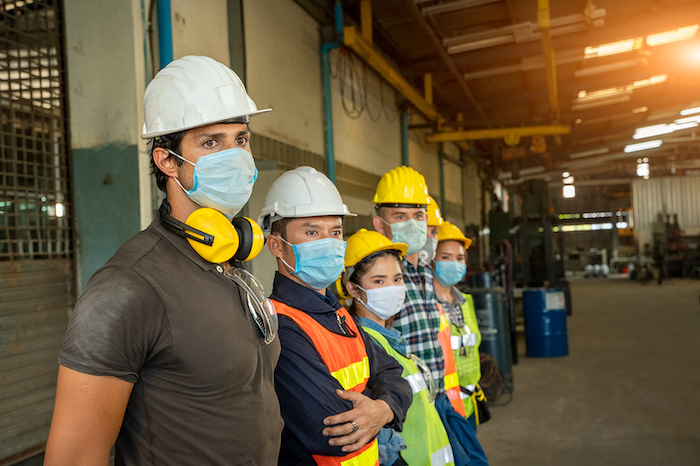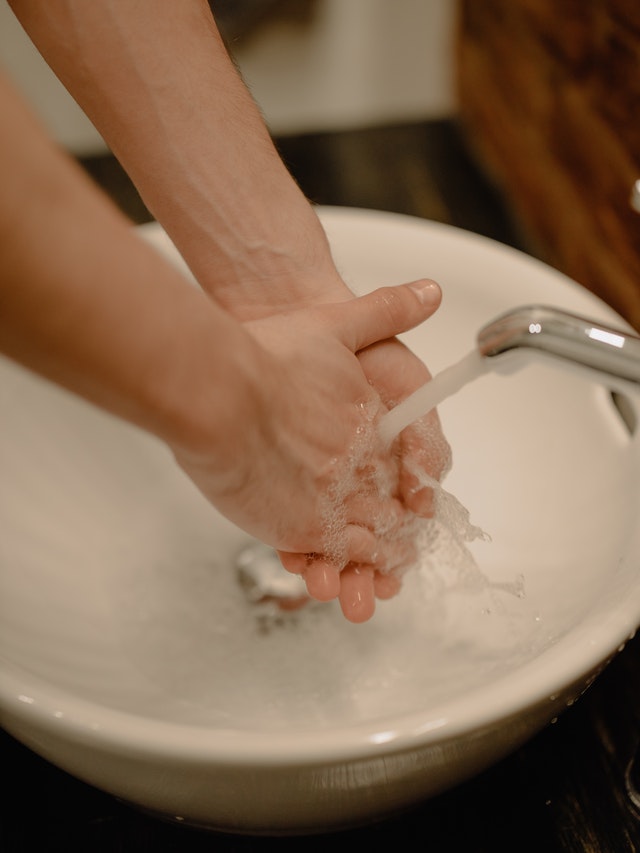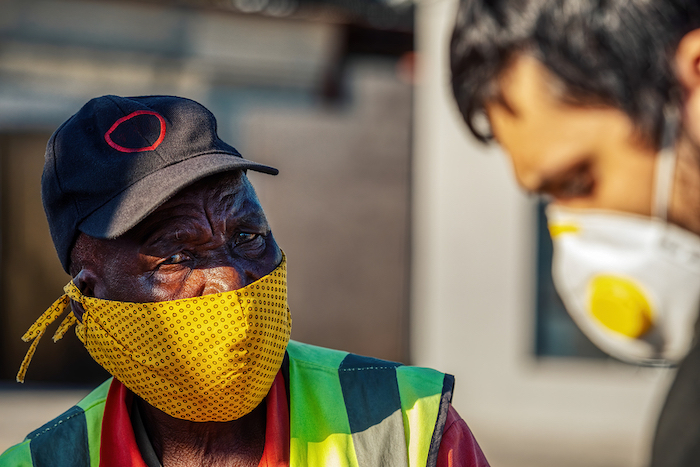5 Questions to Answer for a Healthy Return to Work
As the country is returning to work, there are many questions and considerations that have to be taken into account due to the Novel Coronavirus Pandemic. You may wonder what work life will look like for the coming weeks, months, and years. Or, maybe you want to ensure that your business will continue running smoothly should another outbreak or crisis happen again. No matter if you’re the CEO or a frontline worker, there has to be a plan in place, procedures to follow, and, most importantly, peace of mind that it’s safe to work.
Let’s go through some of the questions that should be addressed to safely manage a return to work and ensure your business can run smoothly if a crisis returns.
1. Why Should I Be More Conscious About Health Safety?
 A healthy workforce is vital in keeping a running business and stable jobs. We know firsthand the effects of a rapidly spreading illness through a facility — business halts, putting jobs, paychecks, and lives on the line. Taking the proper hygienic precautions is vital in keeping your colleagues healthy and safe on the job.
A healthy workforce is vital in keeping a running business and stable jobs. We know firsthand the effects of a rapidly spreading illness through a facility — business halts, putting jobs, paychecks, and lives on the line. Taking the proper hygienic precautions is vital in keeping your colleagues healthy and safe on the job.
Practicing good hygiene on a daily basis can help down the road as well. Should something of this nature happen again, or there’s a resurgence in the coronavirus, having the tools, practices, and emergency plans in place could mean the difference between keeping people healthy while business stays productive or having to shut down the business to ensure the safety of your workers.
Not only could an illness spread at the workplace, but it could also follow workers home. Harmful contaminants can travel from the site to their homes and affect those that they love. Sending your employees home safely, and with the peace of mind that everything at the workplace was done as safely as possible, is critical in managing a productive business and keeping people healthy.
2. What Can I Do to Create a More Hygienic Workplace?
Proper Hygiene
 It all starts at the individual level. Washing your hands throughout the day, using alcohol-based sanitizer, and covering your cough and sneezes are all crucial in staying healthy and preventing the spread of harmful germs at work. These are steps you can personally take that can protect everyone at the workplace:
It all starts at the individual level. Washing your hands throughout the day, using alcohol-based sanitizer, and covering your cough and sneezes are all crucial in staying healthy and preventing the spread of harmful germs at work. These are steps you can personally take that can protect everyone at the workplace:
- Wash your hands with soap and water for at least 20 seconds
- Use of 60% alcohol-based hand sanitizer throughout the day before and after interacting with any shared surfaces
- Cover your coughs and sneezes into a tissue, handkerchief, or elbow
- Regular hygienic practices will help prevent the build-up of harmful bacteria and germs
Check out the CDC washing hands' guide. It may surprise you how thorough you’re supposed to be.
Social Distancing
By now, you probably heard of something called “social distancing”, or keeping a distance of at least 6 feet from anyone around you. This should remain a priority to keep germs and viruses away and out of your body. The reason we social distance is because of the inability for coronavirus, and many other pathogens, to travel more than 6 feet through the air.
Some ways you can improve your workplace and offices for social distancing:
- Rearrange the facility to keep desks/linework/shared resources separated by six or more feet
- Mark the floors with tape in safe distances for an easy indicator
- Put up railing or rope pathways, such as KeeMark or mounted railing
- Install protection barriers made of plastic or plexiglass to create a safe separator
- Hold meetings in wide-open spaces
Personal Protective Equipment

Unless your field requires PPE for hygienic purposes, you’re probably not used to wearing sanitary masks or surgical gloves on the job. This is a step that ensures germs and viruses stay out of your body if you’re properly wearing your PPE, as well as keeping your own pathogens to yourself. If you’re unfamiliar with the proper ways to wear, take care of, and remove PPE for hygienic purposes, check out our quick read around keeping germs out with PPE.
Employees, Stay Home If You’re Sick
Often, we’ll have a bug without even realizing it. Symptoms sometimes appear to be nothing at first and the same is often true for the coronavirus. Staying home and isolated is the best way to keep your germs from spreading to anyone else. Hopefully, you’re encouraged to call out if you’re feeling ill. (Just don’t ruin it by playing hooky.)
Employers, Consider Shifted Work Times
Having regimented, staggered work arrivals, breaks, and departures can be a great way to reduce the amount of traffic to and from the workplace. Incremental time slots of 15 minutes can allow for small groups of people to come through the doors at any given time upon arrival and departure. The same goes for break times to make sure break rooms or common areas aren’t being filled up at any given time. We know all about separating people from hazards. Controlling the number of people in any area at once can reduce the risk of spreading harmful contaminants from one to another.
Everyone, Return Home Safely After Work
It may be tempting to get off your shift and get home after a long day of work. It’s important to take a second to make sure anything you bring home is sanitary. Wash your hands immediately after work, leave what you don’t need at work and try not to touch anything unnecessarily in the process. Take a look at our PPE safety blog to learn more about this process.
3. When Do These Practices Need to be Implemented?
Right now. And, continued down the road.
As you begin to return to work, you need to be incorporating safe and health-focused practices into your daily work routine. It is crucial to maintain the practices that helped to drive down the number of coronavirus cases. It will still be around while we return to work and preparing for coronavirus now will ensure safety and stability in case of a resurgence or another similar crisis down the road. However, these changes may not be the end of what needs to be done. As businesses move forward, updated information will inevitably come out that will either require more drastic measures to be put in place or will show evidence that you can start relaxing some of the policies. It’s vital to be vigilant and up to date to ensure you’re providing the best practices for your employees, and employees are doing what they can to keep your work environment healthy.
4. Is My Field Really that Affected?
Short answer? Yes. Everyone is impacted and should be doing what they can to prevent a resurgence while keeping your local business, community, and yourself healthy.
Long answer? Different fields have varying levels of risk attached to the nature of their industry. The levels range from “Very High” to “Low” with the highest risk assigned to frontline workers or those that constantly come into contact with carriers. The lowest risk includes fields that have limited contact with sources of the virus or that rarely come into contact with coworkers or the public. For a detailed view of the risk level associated with different fields, see this guide from OSHA.
5. What Responsibilities Should My Workplace Take to Ensure a Safe Environment?
The overarching theme here is to promote and encourage each employee to follow the advice listed above. This means providing information for the employees, stocking up on soap, sanitizer, and available PPE, and encouraging hygienic practices such as covering coughs and staying home when sick.
Here’s a brief checklist of the things that should be done in the workplace to stay hygienic:
- Daily housekeeping: disinfect surfaces, equipment, and supplies
- Provide and consistently empty trash and recycling bins
- Ensure soap dispensers are filled
- Have readily available PPE for employees
- Stock disposable tissues and sanitary wipes
- Disseminate information/updates to workers in a timely manner
- Post signs to encourage hygienic practices
- Work with local health officials to remain up to date
Knowing what safety measures should be taken is half the battle. Addressing those concerns to your employer in the proper way is critical in getting a solution implemented. We created a list of tips on how to address these concerns with your employers.
EAP - Emergency Action Plan
While Covid-19 may not be here forever, a similar crisis could happen at any time in the future. An emergency action plan will allow you to get through these crises, and right now is a perfect time to update your EAP with the best guidelines and policies to follow in an emergency. Some information for your EAP relevant to virus outbreaks includes:
- Where risks may lie for contact with harmful pathogens at the workplace
- Risk factors at home or in the community that may be brought into the workplace
- Risks for individuals such as autoimmune disorders or allergies
- PPE locations and information on how to use it
There are many more details that you can explore in OSHA's in-depth Covid-19 guide on preparing the workplace from the CDC.
Recap
The new day-to-day looks much different with the use of sanitary masks, emphasis on hygiene, and stronger measures to promote a healthy and safe environment post-coronavirus. It comes down to all of us doing our part to provide peace of mind that we don’t have to be worried about catching a virus, a future outbreak, or that our jobs are on the line. Whether you want to return home safely at the end of the day or ensure that business can operate in the future without a hitch, having the right policies, practices, and safeguards in place will keep you safe and secure. Now that you know how to improve safety at your workplace, there’s one more question to ask; “Am I prepared for a return to work?”

